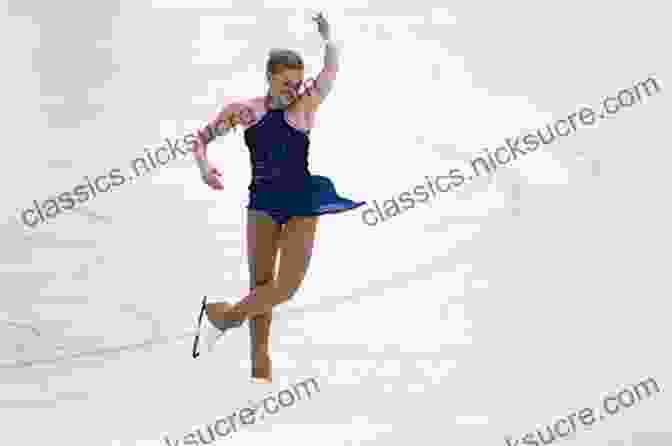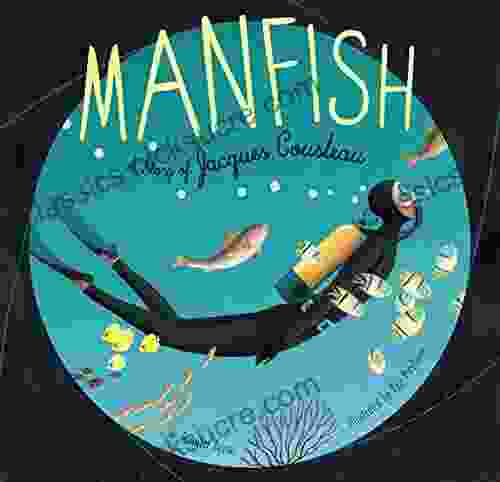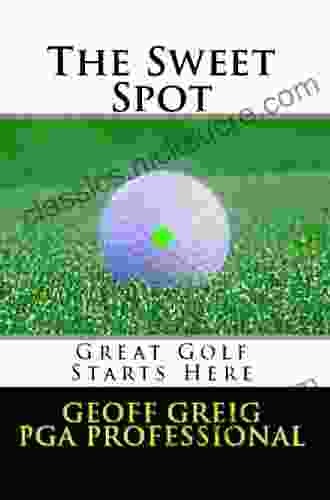Breaking Down the Science of Figure Skating Jumps for Effective Training and Analysis


Figure skating jumps are a staple element of the sport, showcasing the athlete's athleticism, coordination, and technical proficiency. They involve a complex interplay of biomechanical forces that, when executed correctly, can propel a skater high into the air for graceful and awe-inspiring spins and rotations.
4 out of 5
| Language | : | English |
| File size | : | 1168 KB |
| Text-to-Speech | : | Enabled |
| Screen Reader | : | Supported |
| Enhanced typesetting | : | Enabled |
| Word Wise | : | Enabled |
| Print length | : | 64 pages |
| Lending | : | Enabled |
Understanding the science behind these jumps is paramount for both skaters and coaches to optimize training methods and improve performance. This comprehensive article will delve into the intricacies of figure skating jumps, exploring the physical forces, technique, and training principles involved.
The Anatomy of a Jump
A figure skating jump comprises several distinct phases:
- Preparatory phase: The skater starts with a gliding motion, gradually increasing speed and gaining momentum.
- Takeoff phase: The skater plants one foot on the ice and propels themselves into the air with a powerful push.
- Flight phase: The skater executes rotations and spins while airborne.
- Landing phase: The skater controls the descent and lands gracefully on the ice.
Each phase requires a specific set of biomechanical actions and technical skills.
Biomechanics of Jumps
Figure skating jumps are governed by the laws of Newtonian mechanics. The following forces play crucial roles:
- Gravity: Pulls the skater down towards the ice.
- Centripetal force: Keeps the skater moving in a circular path during rotations.
- Centrifugal force: Acts outward from the center of the circle, tending to pull the skater away from the axis of rotation.
- Angular momentum: Conserved during the jump, allowing the skater to maintain rotation without external forces.
Skilled skaters use these forces to their advantage to generate power, control body position, and execute smooth rotations.
Technical Aspects of Jumps
Effective jump technique involves:
- Proper takeoff timing: To maximize propulsion and height.
- Strong takeoffs: Using the free leg for additional power.
- Optimal jump height: Determined by factors such as speed, edge quality, and body position.
- Controlled rotations: Maintaining body alignment and momentum during spins.
- Graceful landings: To absorb impact and prevent injury.
Skilled skaters undergo rigorous training to refine these technical aspects.
Training Principles
Effective training for figure skating jumps involves:
- Progressive overload: Gradually increasing jump difficulty and intensity over time.
- Specificity: Practicing jumps specific to competitions.
- Feedback and analysis: Using video recordings and coaching input to identify areas for improvement.
- Strength and conditioning: Developing power, flexibility, and endurance to support jump performance.
- Mental training: Building confidence and focus to execute jumps under pressure.
A comprehensive training program should address all these principles to optimize the athlete's capabilities.
Common Jump Types
Figure skating jumps are classified into several types, each with unique characteristics:
- Toe jumps: Skaters take off from the toe pick and perform rotations in the air.
- Lutz jumps: A combination of a toe jump and a flip jump.
- Flip jumps: Skaters take off from a back outside edge and rotate backward in the air.
- Salchow jumps: Skaters take off from a back inside edge and rotate in the air.
- Loop jumps: Skaters take off from a back outside edge and rotate forward in the air.
- Axel jumps: A unique jump that combines a forward take-off and a backward rotation.
Skating competitions often feature a variety of jumps to showcase the skaters' versatility and technical skills.
Figure skating jumps are a testament to the athleticism and artistry of this captivating sport. Understanding the science behind these jumps empowers skaters and coaches to optimize training methods, enhance performance, and prevent injuries. By mastering the biomechanics, technique, and training principles, skaters can execute jumps with greater height, control, and precision, leaving audiences in awe.
Continuing advancements in science and technology offer exciting possibilities for analyzing and improving jump performance. Motion capture systems and biomechanical modeling can provide detailed insights into jump mechanics, enabling skaters to fine-tune their technique and push the boundaries of human movement.
Whether gracing the ice in competitions or simply gliding for pleasure, figure skating jumps embody the spirit of innovation and the pursuit of excellence, inspiring generations of athletes and captivating spectators worldwide.
4 out of 5
| Language | : | English |
| File size | : | 1168 KB |
| Text-to-Speech | : | Enabled |
| Screen Reader | : | Supported |
| Enhanced typesetting | : | Enabled |
| Word Wise | : | Enabled |
| Print length | : | 64 pages |
| Lending | : | Enabled |
Do you want to contribute by writing guest posts on this blog?
Please contact us and send us a resume of previous articles that you have written.
 Fiction
Fiction Non Fiction
Non Fiction Romance
Romance Mystery
Mystery Thriller
Thriller SciFi
SciFi Fantasy
Fantasy Horror
Horror Biography
Biography Selfhelp
Selfhelp Business
Business History
History Classics
Classics Poetry
Poetry Childrens
Childrens Young Adult
Young Adult Educational
Educational Cooking
Cooking Travel
Travel Lifestyle
Lifestyle Spirituality
Spirituality Health
Health Fitness
Fitness Technology
Technology Science
Science Arts
Arts Crafts
Crafts DIY
DIY Gardening
Gardening Petcare
Petcare Ted Starkey
Ted Starkey David Lindley
David Lindley Keith Devlin
Keith Devlin Iain Campbell
Iain Campbell Michael Werner
Michael Werner Kevin Fall
Kevin Fall William J Knaus
William J Knaus Annie Vernon
Annie Vernon Richard Watts
Richard Watts Paul Nardozzi
Paul Nardozzi Paul Wilbur
Paul Wilbur Martin Lees
Martin Lees C Rich
C Rich Jackson Carter
Jackson Carter Magoosh
Magoosh Steven Harrison
Steven Harrison Annie Murphy Paul
Annie Murphy Paul Michael Higgins
Michael Higgins Phillip E Johnson
Phillip E Johnson Emily L Casanova
Emily L Casanova Kathryn Aalto
Kathryn Aalto Brandon Sieh
Brandon Sieh Gerald Marzorati
Gerald Marzorati Stephen White
Stephen White Randy Ribay
Randy Ribay Raye Wagner
Raye Wagner Gareth James
Gareth James Ric K Hill
Ric K Hill Christopher Paolini
Christopher Paolini William S Vincent
William S Vincent Dr Harrison Sachs
Dr Harrison Sachs Allistair Mccaw
Allistair Mccaw Douglas Boze
Douglas Boze Heath Lambert
Heath Lambert Jake Byrne
Jake Byrne David Sheff
David Sheff Anne Lamott
Anne Lamott Dr Julie Shannon
Dr Julie Shannon Erika Larkin
Erika Larkin Thema Bryant Davis
Thema Bryant Davis Kathryn Cadenhead Colgrove
Kathryn Cadenhead Colgrove Joel Gunderson
Joel Gunderson Shannon Allen
Shannon Allen Mana Takahashi
Mana Takahashi Anne Mctiernan
Anne Mctiernan Francheska Fifield
Francheska Fifield Deborah Ellis
Deborah Ellis Patty Bear
Patty Bear Filipe Masetti Leite
Filipe Masetti Leite Micheal J Murphy
Micheal J Murphy Joshua M Powell
Joshua M Powell Supersummary
Supersummary David Hume
David Hume Jack Petrash
Jack Petrash David Shoemaker
David Shoemaker Marcia L London
Marcia L London Sarah Kowalski
Sarah Kowalski Carl Nattrass
Carl Nattrass Victoria Biggs
Victoria Biggs Lynn Painter
Lynn Painter Michael Howard
Michael Howard David Foster Wallace
David Foster Wallace Tony Nester
Tony Nester Paul J Zak
Paul J Zak Lucie Hemmen
Lucie Hemmen Colm Cooper
Colm Cooper Lady Gaga
Lady Gaga Bruce Bryans
Bruce Bryans Steve Currier
Steve Currier David C M Dickson
David C M Dickson Zenas Leonard
Zenas Leonard Bryan Greetham
Bryan Greetham James Lock
James Lock Lisa Delmedico Harris
Lisa Delmedico Harris Eddie Rafii
Eddie Rafii Josh Alwine
Josh Alwine Donald Asher
Donald Asher Kate Jones
Kate Jones Anne Laure Jackson
Anne Laure Jackson R Michael Shaft
R Michael Shaft Anthony Edwards
Anthony Edwards Ken Shamrock
Ken Shamrock Ted Leeson
Ted Leeson Caroline D Greene
Caroline D Greene Marcia Nathai Balkissoon
Marcia Nathai Balkissoon Dr Hooelz
Dr Hooelz Sasha Sagan
Sasha Sagan Anne Griffin Perry
Anne Griffin Perry Nancy Forbes
Nancy Forbes Rina Mae Acosta
Rina Mae Acosta Barney Scout Mann
Barney Scout Mann Julie Kagawa
Julie Kagawa Olivia Seltzer
Olivia Seltzer Jim Zub
Jim Zub Audiolearn Content Team
Audiolearn Content Team Susan H Kamei
Susan H Kamei William Rathje
William Rathje Lavinia Spalding
Lavinia Spalding Dave Heller
Dave Heller Darren Levine
Darren Levine Jo Wimpenny
Jo Wimpenny Richard Sale
Richard Sale Phil Richards
Phil Richards Al Beatty
Al Beatty Sali Hughes
Sali Hughes Jean Liedloff
Jean Liedloff Fazale Rana
Fazale Rana Aarron Davis
Aarron Davis Jamie Davis
Jamie Davis Laura Hillenbrand
Laura Hillenbrand Vijay Prashad
Vijay Prashad Bill Plotkin
Bill Plotkin Sarah Luddington
Sarah Luddington Rachel Macy Stafford
Rachel Macy Stafford Kay West
Kay West David H Stern
David H Stern Teri Halstead Rn Msn
Teri Halstead Rn Msn Heather Atkinson
Heather Atkinson Mishka Shubaly
Mishka Shubaly David M Carballo
David M Carballo Benjamin Wiker
Benjamin Wiker Kelly St Clare
Kelly St Clare Richard Preston
Richard Preston Thomas Celentano
Thomas Celentano Eduardo Kohn
Eduardo Kohn Sir Francis Chichester
Sir Francis Chichester Anne Winkler Morey
Anne Winkler Morey Shelley Emling
Shelley Emling Marcus Engel
Marcus Engel Derek C Hutchinson
Derek C Hutchinson Glenn Adamson
Glenn Adamson Sean Moloney
Sean Moloney Julie Schoen
Julie Schoen Henry Treece
Henry Treece Susan Ee
Susan Ee Zoeunlimited
Zoeunlimited Monica Seles
Monica Seles Kristina Kuzmic
Kristina Kuzmic Bob Seshadri
Bob Seshadri Ed Housewright
Ed Housewright Jamie D Roberts Lmft
Jamie D Roberts Lmft Abdi Nazemian
Abdi Nazemian Michael Lieberman
Michael Lieberman Bernard Ollivier
Bernard Ollivier Norm Zeigler
Norm Zeigler Vincent J Monastra
Vincent J Monastra Kristi Hugstad
Kristi Hugstad Theodore M Porter
Theodore M Porter Richard Freeman
Richard Freeman John Mole
John Mole Joe Borelli
Joe Borelli Stan Byrdy
Stan Byrdy Anthony E Wolf
Anthony E Wolf L J Smith
L J Smith George M Marsden
George M Marsden Jack Challoner
Jack Challoner Dustin Brady
Dustin Brady Roger Eckstine
Roger Eckstine William Johnston
William Johnston Mike Ashley
Mike Ashley Anthea Sharp
Anthea Sharp I Randolph Daniel
I Randolph Daniel Richard Allen
Richard Allen Sabrina Sargent
Sabrina Sargent John Allen Paulos
John Allen Paulos Ken Bain
Ken Bain Florence Littauer
Florence Littauer Melinda Cooper
Melinda Cooper Annie Thoms
Annie Thoms Margaret L Lial
Margaret L Lial Ascencia Pharmacy Technician Exam Prep Team
Ascencia Pharmacy Technician Exam Prep Team Bianca Scardoni
Bianca Scardoni Ashild Kolas
Ashild Kolas Jody Studdard
Jody Studdard Shannon Lee
Shannon Lee Daniel L Bray
Daniel L Bray Matt Bronsil
Matt Bronsil Steven M Rice
Steven M Rice Pedro J Izquierdo
Pedro J Izquierdo Jaron Lanier
Jaron Lanier Laurence Parent
Laurence Parent Beth Jacobs Phd
Beth Jacobs Phd Leo Furcht
Leo Furcht Jacob Erez
Jacob Erez Jennifer L Lopez
Jennifer L Lopez William A Richards
William A Richards Shaun Gallagher
Shaun Gallagher Lamorna Ash
Lamorna Ash Jolene Stockman
Jolene Stockman Ben Stoeger
Ben Stoeger David Cayley
David Cayley Jan D Carline
Jan D Carline Jules Archer
Jules Archer Jon Cohen
Jon Cohen Francis French
Francis French Julian Thomas
Julian Thomas Kelly Oram
Kelly Oram Edward Espe Brown
Edward Espe Brown Rick Brinkman
Rick Brinkman Giovanni Bennardo
Giovanni Bennardo Critical Role
Critical Role Christopher D Winnan
Christopher D Winnan Vanessa Van Edwards
Vanessa Van Edwards Mamma Margaret
Mamma Margaret Greg Jacobs
Greg Jacobs Kindle Edition
Kindle Edition Jd Long
Jd Long Saul Greenberg
Saul Greenberg Ernest Nagel
Ernest Nagel Justin J Lehmiller
Justin J Lehmiller Julia Cook
Julia Cook Tella Olayeri
Tella Olayeri Steve Schwartz
Steve Schwartz Kris Hampton
Kris Hampton Belden C Lane
Belden C Lane Thomas Settimi
Thomas Settimi Barbara Savage
Barbara Savage Hiro Fujiwara
Hiro Fujiwara Johnson Smith
Johnson Smith Judy Corry
Judy Corry Anne Garrels
Anne Garrels Don Cherry
Don Cherry Elia Kacapyr
Elia Kacapyr Thor Heyerdahl
Thor Heyerdahl Chella Quint
Chella Quint Susan Dexter
Susan Dexter Billy Hansen
Billy Hansen Srinivasan S Pillay
Srinivasan S Pillay Stephen Rodrick
Stephen Rodrick John J Donohue
John J Donohue Annette Evans
Annette Evans Bobby Bowden
Bobby Bowden Maxine Van Evera Lupo
Maxine Van Evera Lupo Annie Boochever
Annie Boochever Lena Empyema
Lena Empyema Kathleen M Galvin
Kathleen M Galvin Jerry A Pattengale
Jerry A Pattengale Karen Simmers Nartker
Karen Simmers Nartker Dan John
Dan John Kerry Andy Ph D
Kerry Andy Ph D Rory D Nelson
Rory D Nelson Christine Gross Loh
Christine Gross Loh Del Hungerford
Del Hungerford Isee Exam Preparation Experts
Isee Exam Preparation Experts Chris Creamer
Chris Creamer Jennifer Berne
Jennifer Berne Terri Schneider
Terri Schneider Ross W Greene
Ross W Greene John Snygg
John Snygg Helena Hjalmarsson
Helena Hjalmarsson Richard Evans
Richard Evans Peter Grey
Peter Grey T K Richardson
T K Richardson Paul H Wender
Paul H Wender Lorraine Evans
Lorraine Evans Jessica Megan Larson
Jessica Megan Larson Christie Matheson
Christie Matheson Consumer Dummies
Consumer Dummies Peter Walker
Peter Walker R I Chalmers
R I Chalmers Kay L Moody
Kay L Moody Tim Sullivan
Tim Sullivan Geoff Greig
Geoff Greig Ronald W Kipp
Ronald W Kipp Barry Meadow
Barry Meadow Anne Arthur
Anne Arthur Francis Su
Francis Su Jim Meuninck
Jim Meuninck Bert Randolph Sugar
Bert Randolph Sugar Neva Sullaway
Neva Sullaway Robert Weintraub
Robert Weintraub Aw Schultz
Aw Schultz Julian Savulescu
Julian Savulescu Elizabeth Pantley
Elizabeth Pantley Herb Payson
Herb Payson Carter G Walker
Carter G Walker Vic Widman
Vic Widman Frank M Snowden
Frank M Snowden Danya Ruttenberg
Danya Ruttenberg Spencer Langley
Spencer Langley Eric Stice
Eric Stice Jean Watson
Jean Watson Doug Knutson
Doug Knutson Anneli Williams
Anneli Williams Wiley Mccrary
Wiley Mccrary Simon Gawesworth
Simon Gawesworth Patrick Leigh Fermor
Patrick Leigh Fermor Marilynn Hughes
Marilynn Hughes Christopher F Chabris
Christopher F Chabris John Michael Greer
John Michael Greer Creek Stewart
Creek Stewart Madeleine Boskovitz Ph D
Madeleine Boskovitz Ph D Shanna Swendson
Shanna Swendson Kevin Keitoshi Casey
Kevin Keitoshi Casey La Leche League International
La Leche League International The Tutorverse
The Tutorverse Christopher Van Tilburg
Christopher Van Tilburg Anne Blythe
Anne Blythe Casey Mcquiston
Casey Mcquiston Marlo Thomas
Marlo Thomas Claire Legrand
Claire Legrand Skeleton Steve
Skeleton Steve Ron Fry
Ron Fry Luke Amadeus Ranieri
Luke Amadeus Ranieri Michael A Stackpole
Michael A Stackpole Dr Deirdre Clark
Dr Deirdre Clark New England Wild Flower Society
New England Wild Flower Society Kj Dell Antonia
Kj Dell Antonia Jacqueline Boyle
Jacqueline Boyle Nat Brown
Nat Brown Jean Markale
Jean Markale Joshua Lawrence Kinser
Joshua Lawrence Kinser Jeffrey E F Friedl
Jeffrey E F Friedl Annie Brock
Annie Brock Traci B Fox
Traci B Fox Kim Hutchinson
Kim Hutchinson Peter Turchin
Peter Turchin Ryan T White
Ryan T White Ruth Ravid
Ruth Ravid Leslie Scrivener
Leslie Scrivener Whitney Stewart
Whitney Stewart Babette A Brumback
Babette A Brumback John R Anderson
John R Anderson Matilda Joslyn Gage
Matilda Joslyn Gage W Ben Hunt
W Ben Hunt Herbert Dorsey
Herbert Dorsey Jeff Feldhahn
Jeff Feldhahn Russ King
Russ King Laura Warren Hill
Laura Warren Hill Cindy Pawlcyn
Cindy Pawlcyn Merlisa Lawrence Corbett
Merlisa Lawrence Corbett Meg Meeker
Meg Meeker Sue Dumais
Sue Dumais Frank Burtnett
Frank Burtnett Ken Siri
Ken Siri Shea Serrano
Shea Serrano Ed Van Put
Ed Van Put Chuck Tingle
Chuck Tingle Gabrielle Walker
Gabrielle Walker Dean Karlan
Dean Karlan Henry Malone
Henry Malone C G Yeager
C G Yeager Carl Hiaasen
Carl Hiaasen Joseph Mctaggart
Joseph Mctaggart Lexie Williamson
Lexie Williamson Patrick Mansell
Patrick Mansell Svetlana Boym
Svetlana Boym Yani Alfonso
Yani Alfonso Trina Boice
Trina Boice Chad Noreuil
Chad Noreuil Kass Morgan
Kass Morgan P G Wodehouse
P G Wodehouse Companion Works
Companion Works Rose Kelly
Rose Kelly Michael Wombacher
Michael Wombacher Rick August
Rick August Daniel Barbarisi
Daniel Barbarisi Reia
Reia Marv Wolfman
Marv Wolfman Annemarie Brear
Annemarie Brear Timothy Egan
Timothy Egan Dave Bosanko
Dave Bosanko M J Ryan
M J Ryan Eric J Mash
Eric J Mash Bradley Wiggins
Bradley Wiggins Brian J Sorrells
Brian J Sorrells Michael Bernick
Michael Bernick Colleen Macklin
Colleen Macklin Lee Carroll
Lee Carroll Tom Clynes
Tom Clynes David G Mcafee
David G Mcafee K Loraine
K Loraine Julie Foudy
Julie Foudy David W Shaw
David W Shaw David Long
David Long Douglas R Dechow
Douglas R Dechow Margaret Bemister
Margaret Bemister Sarah Beeson
Sarah Beeson Graham Poll
Graham Poll Kristen Welch
Kristen Welch Jacalyn Duffin
Jacalyn Duffin Melinda Sharma
Melinda Sharma Stephen Kendrick
Stephen Kendrick Annie Duke
Annie Duke David Norrie
David Norrie Jamie Thom
Jamie Thom T Edward Nickens
T Edward Nickens Courtney Mayer
Courtney Mayer Dana Meachen Rau
Dana Meachen Rau Steve Mcmichael
Steve Mcmichael Bob Mullen
Bob Mullen Annette Dixon
Annette Dixon Maria Del Mar Sacasa
Maria Del Mar Sacasa Shing Yin Khor
Shing Yin Khor Anne Crossman
Anne Crossman Olly Postanin
Olly Postanin John U Bacon
John U Bacon John Powers
John Powers Gareth Ainsworth
Gareth Ainsworth Gary Genard
Gary Genard Michael Mckinley
Michael Mckinley Shyam Bharath S D
Shyam Bharath S D Henry Stedman
Henry Stedman Robert Kaplinsky
Robert Kaplinsky Charles L Byrne
Charles L Byrne Hans Florine
Hans Florine Lucy Sutcliffe
Lucy Sutcliffe Peter C Earle
Peter C Earle Julie Hall
Julie Hall Warren Hilton
Warren Hilton Jeffrey Rubin
Jeffrey Rubin Johnny Chuong
Johnny Chuong New Scientist
New Scientist Michelle Obama
Michelle Obama Harlan Cohen
Harlan Cohen Frost Kay
Frost Kay Kimberly D Coleman
Kimberly D Coleman Jackie Bolen
Jackie Bolen Tarl Warwick
Tarl Warwick Marie W Lawrence
Marie W Lawrence Desmond Morris
Desmond Morris Wayne L Winston
Wayne L Winston Sheril Kirshenbaum
Sheril Kirshenbaum Marsha M Linehan
Marsha M Linehan Rabbi Jason Sobel
Rabbi Jason Sobel Joshua Piven
Joshua Piven Md Nazaneen Homaifar
Md Nazaneen Homaifar Steve Mchugh
Steve Mchugh Harvey Karp
Harvey Karp Zohar Ben Shoham
Zohar Ben Shoham Bill Shipley
Bill Shipley Tanya Lloyd Kyi
Tanya Lloyd Kyi Annette Lareau
Annette Lareau Britta Wallace
Britta Wallace Ben Alexander
Ben Alexander Robert Nye
Robert Nye John N Carbone
John N Carbone Julian Winters
Julian Winters Tomohito Oda
Tomohito Oda Tom Hull
Tom Hull Mark Murphy
Mark Murphy Daniele Bolelli
Daniele Bolelli David Hoffbrand
David Hoffbrand Fred Shoemaker
Fred Shoemaker Christo Obreschkow
Christo Obreschkow C Mo
C Mo Ralph Henry Barbour
Ralph Henry Barbour Joe Samuel Starnes
Joe Samuel Starnes Stanley H Block
Stanley H Block Sara Bennett
Sara Bennett Johnny Weir
Johnny Weir David Mcgowan
David Mcgowan Scott Ellsworth
Scott Ellsworth Lamar Underwood
Lamar Underwood Shirley Davis Brown
Shirley Davis Brown Jacob Biggle
Jacob Biggle Cylin Busby
Cylin Busby David Hart
David Hart Jak Beardsworth
Jak Beardsworth Michelle Mullen
Michelle Mullen Katie Hewett
Katie Hewett Michael Volkmar
Michael Volkmar Mjg Education
Mjg Education Lorne Rubenstein
Lorne Rubenstein Yury Kronn
Yury Kronn Jack Thurston
Jack Thurston Tim Hill
Tim Hill Glen Simmons
Glen Simmons Nicholas Johnson
Nicholas Johnson Marie Lu
Marie Lu Richmond Campbell
Richmond Campbell Notesbo Funny
Notesbo Funny Peter Lipton
Peter Lipton Wilfred Cude
Wilfred Cude Kathleen Kirkland
Kathleen Kirkland Gail Fay
Gail Fay Claire Fraise
Claire Fraise Lynn Marriott
Lynn Marriott Janet Lansbury
Janet Lansbury Jennifer Raff
Jennifer Raff Judy Arnall
Judy Arnall Proper Education Group
Proper Education Group Tim Grollimund
Tim Grollimund
Light bulbAdvertise smarter! Our strategic ad space ensures maximum exposure. Reserve your spot today!

 Max TurnerHigh School Students Tackle Citizenship Test: A Reflection on Civic Education...
Max TurnerHigh School Students Tackle Citizenship Test: A Reflection on Civic Education... Junot DíazFollow ·9.1k
Junot DíazFollow ·9.1k Sean TurnerFollow ·4.6k
Sean TurnerFollow ·4.6k Greg FosterFollow ·15.7k
Greg FosterFollow ·15.7k H.G. WellsFollow ·13.3k
H.G. WellsFollow ·13.3k Isaias BlairFollow ·16.9k
Isaias BlairFollow ·16.9k Davion PowellFollow ·14.7k
Davion PowellFollow ·14.7k Victor TurnerFollow ·19k
Victor TurnerFollow ·19k Jack LondonFollow ·12.1k
Jack LondonFollow ·12.1k

 George Martin
George MartinWildcard Warcross by Marie Lu: The Ultimate Guide to the...
Wildcard Warcross, the...

 Houston Powell
Houston PowellMountaineering Madness: The Deadly Race to Summit the...
The Himalayas, towering over the...

 Levi Powell
Levi PowellNonparametric Statistical Inference: A Comprehensive...
Nonparametric statistical inference is a...

 Salman Rushdie
Salman RushdieManfish: The Extraordinary Story of Jacques Cousteau, the...
Early Life and Diving Experiments ...

 Ross Nelson
Ross NelsonThe Sweet Spot: Great Golf Starts Here
Welcome to The Sweet Spot,...
4 out of 5
| Language | : | English |
| File size | : | 1168 KB |
| Text-to-Speech | : | Enabled |
| Screen Reader | : | Supported |
| Enhanced typesetting | : | Enabled |
| Word Wise | : | Enabled |
| Print length | : | 64 pages |
| Lending | : | Enabled |












